Related Research Articles
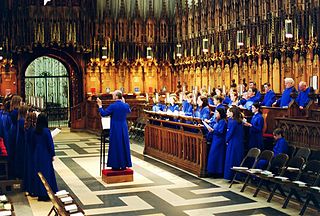
A choir ( KWIRE; also known as a chorale or chorus is a musical ensemble of singers. Choral music, in turn, is the music written specifically for such an ensemble to perform or in other words is the music performed by the ensemble. Choirs may perform music from the classical music repertoire, which spans from the medieval era to the present, or popular music repertoire. Most choirs are led by a conductor, who leads the performances with arm, hand, and facial gestures.

A cantata is a vocal composition with an instrumental accompaniment, typically in several movements, often involving a choir.

Samuel Osmond Barber II was an American composer, pianist, conductor, baritone, and music educator, and one of the most celebrated composers of the mid-20th century. Principally influenced by nine years' composition studies with Rosario Scalero at the Curtis Institute and more than 25 years' study with his uncle, the composer Sidney Homer, Barber's music usually eschewed the experimental trends of musical modernism in favor of traditional 19th-century harmonic language and formal structure embracing lyricism and emotional expression. However, he adopted elements of modernism after 1940 in some of his compositions, such as an increased use of dissonance and chromaticism in the Cello Concerto (1945) and Medea's Dance of Vengeance (1955); and the use of tonal ambiguity and a narrow use of serialism in his Piano Sonata (1949), Prayers of Kierkegaard (1954), and Nocturne (1959).

Adagio for Strings is a work by Samuel Barber arranged for string orchestra from the second movement of his String Quartet, Op. 11.
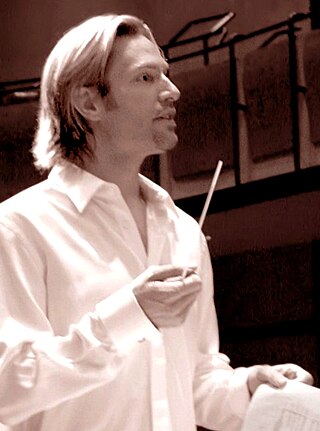
Eric Edward Whitacre is an American composer, conductor, and speaker best known for his choral music.
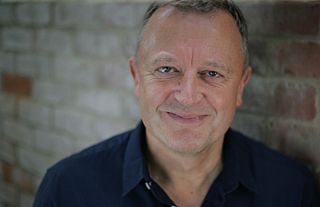
Patrick Hawes is a British composer, conductor, organist and pianist.
Patrick Larley is a British composer.

Agnus Dei(Lamb of God) is a choral composition in one movement by Samuel Barber, his own arrangement of his Adagio for Strings (1936). In 1967, he set the Latin words of the liturgical Agnus Dei, a part of the Mass, for mixed chorus with optional organ or piano accompaniment. The music, in B-flat minor, has a duration of about eight minutes.

Michael McGlynn is an Irish composer, producer, director, and founder of the vocal ensemble Anúna.

René Clausen is an American composer, conductor emeritus of The Concordia Choir, and professor of music at Concordia College in Moorhead, Minnesota. His works are widely performed by high school and church choirs while his more technically demanding pieces have been performed and recorded by college and professional choirs. Among his many accolades, his recent recording, "Life & Breath: Choral Works by René Clausen," received three Grammy Awards at the 55th Grammy Awards in 2013.
Prayers of Kierkegaard, Op. 30, is an extended one-movement cantata written by Samuel Barber between 1942 and 1954. The piece has four main subdivisions and is based on prayers by Søren Kierkegaard. It is written for chorus, large orchestra, soprano solo and incidental tenor and alto solos.

"Ave Maria" is a popular and much-recorded setting of the Latin prayer Ave Maria, originally published in 1853 as "Méditation sur le Premier Prélude de Piano de S. Bach". The piece consists of a melody by the French Romantic composer Charles Gounod that he superimposed over an only very slightly changed version of Bach's Prelude No. 1 in C major, BWV 846, from Book I of his The Well-Tempered Clavier, 1722. The 1853 publication has French text, but it is the 1859 version with the Latin Ave Maria which became popular.
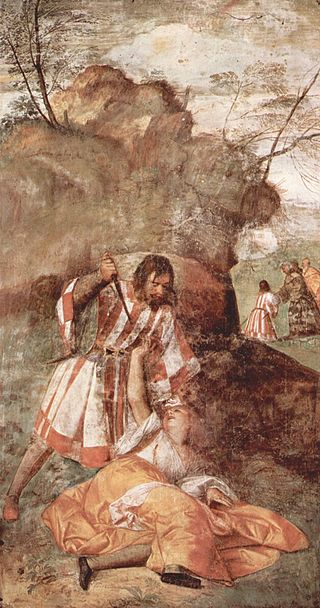
Hymnus amoris, for soloists, choir and orchestra, Opus 12, is Carl Nielsen's earliest choral work. It was first performed at the Music Society (Musikforeningen) in Copenhagen on 27 April 1897 under the baton of the composer.
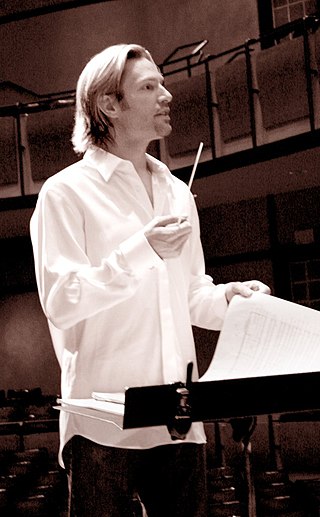
Lux Aurumque is a choral composition in one movement by Eric Whitacre. It is a Christmas piece based on a Latin poem of the same name, which translates as "Light, warm and heavy as pure gold, and the angels sing softly to the new born babe". In 2000, Whitacre set a short Latin text for mixed choir a cappella. In 2005, he wrote an arrangement for wind ensemble. The choral version became known through Whitacre's project Virtual Choir in 2009. The piece is also available for men's choir. A performance takes about four minutes.
Chöre für Doris, after poems by Paul Verlaine, is a three-movement a cappella choral composition by Karlheinz Stockhausen, written in 1950 and later given the number 1/11 in the composer's catalogue of works. The score is dedicated to the composer's future wife Doris.
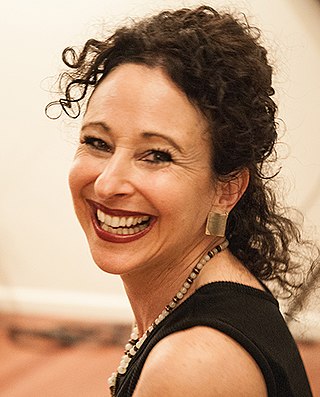
Andrea Clearfield is an American composer of contemporary classical music. Regularly commissioned and performed by ensembles in the United States and abroad, her works include music for orchestra, chorus, soloists, chamber ensembles, dance, opera, film, and multimedia collaborations.
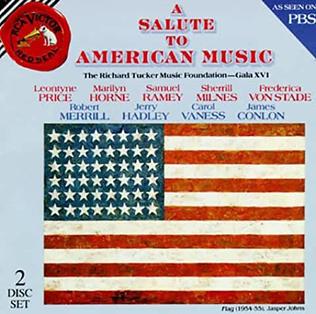
A Salute to American Music is a 113-minute live album of music, both classical and popular, performed by Steven Blier, Renée Fleming, Paul Groves, Jerry Hadley, Karen Holvik, Marilyn Horne, Jeff Mattsey, Robert Merrill, Sherrill Milnes, Maureen O'Flynn, Phyllis Pancella, Leontyne Price, Samuel Ramey, Daniel Smith, Frederica von Stade, Tatiana Troyanos, Carol Vaness and Denise Woods with the Collegiate Chorale and members of the Metropolitan Opera Orchestra under the direction of James Conlon. The album was released in 1992.
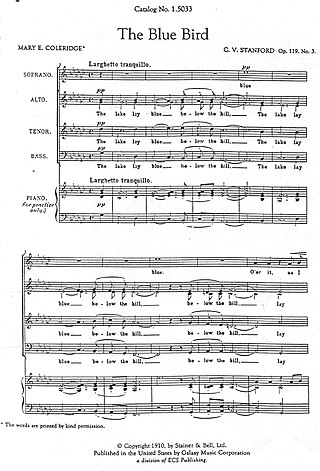
The Blue Bird is a partsong composed by Charles Villiers Stanford in 1910. It is set to the words of L'Oiseau Bleu, a poem by Mary Elizabeth Coleridge, which depicts a bluebird in flight over a lake. It is written for SAATB choir: soprano, divided altos, tenor and bass. "The Blue Bird" is the third of Stanford's Eight Part Songs which are all settings of texts by Coleridge. It was widely performed by choral societies in England during Stanford's life and is considered one of the best English partsongs ever written. It has been recorded by ensembles including The Cambridge Singers, Oxford Camerata, Tenebrae, and the Gabrieli Consort.
References
- ↑ Carol Kimball (2006). Song: A Guide to Art Song Style and Literature. Hal Leonard. p. 284.
- ↑ Heyman, Barbara B. (2001). "Barber, Samuel (Osmond)". In Stanley Sadie; John Tyrrell (eds.). The New Grove Dictionary of Music and Musicians (2nd ed.). London: Macmillan.
- ↑ Peter Dickinson. "Barber Songs:A wonderful reminder of Barber's skill as a songwriter, in ideal performances". Gramophone .